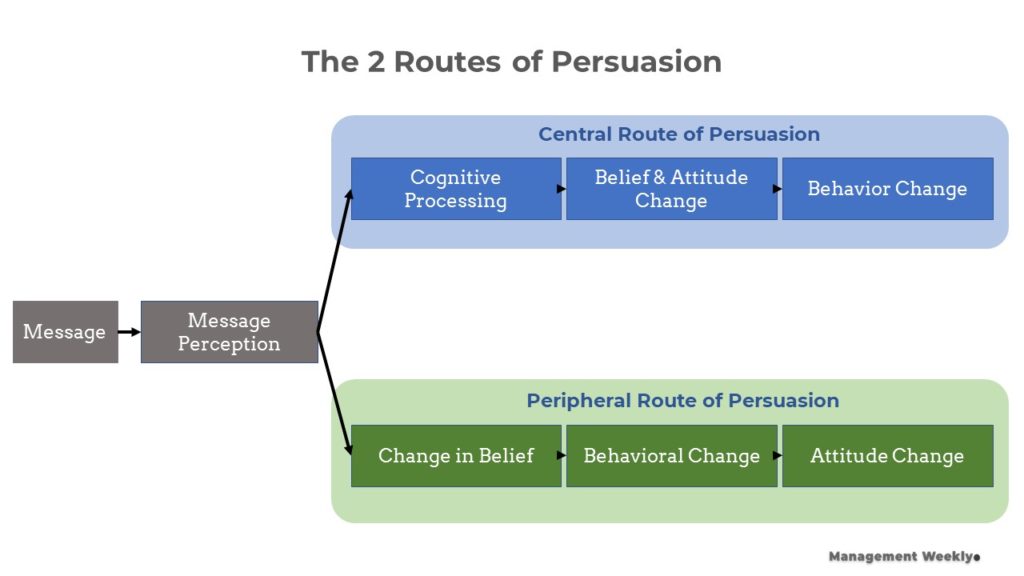The central route of persuasion comes from an interesting theory of cognitive psychology. Petty and Cacioppo demonstrated in their research that we process information in two different ways. We may either process it through the central route or through the peripheral route. The central route of processing happens when we process the information thoroughly. In this article, we shall discuss the central route of persuasion.
What is the central route?
Our brains are not designed to handle all the information we receive. Every second that we are conscious, we are bombarded with information through our senses. We do not have the capacity to process all of this information. It also saves us valuable energy by selectively processing information. Only the relevant events grab our full attention, while irrelevant ones are either neglected or processed with less effort.
The central route of information processing gets activated when:
- There should be motivation to indulge in the information.
- There is ability to process this information
For instance, when we have to buy a toothpaste, we do not have the motivation to search for the perfect one so we will typically just go by our earlier choice. Similarly, consider that you need to buy a DLSR camera. Also, let us say you are not an expert in camera. In this case, you have the motivation to buy the best camera for money.
How central route of persuasion works?
Persuasion is the process of convincing another person. The dual information processing theory also helps us understand the process of persuasion. When a person does not have the motivation or ability to process the message thoroughly, they may accept the message or reject it without thinking too much.
However, when processing the message centrally, they carefully analyze all the arguments presented. After careful analysis, the listener may agree or disagree to the message. If they agree then persuasion has worked else it has failed.

Key Benefits
The biggest benefit of central route of persuasion is the long-lasting effect. When the central route is followed for persuasion, it leads to a change in person’s attitude. We also know that attitude is relatively stable. Therefore, when we persuade someone through this method, they may not get influenced easily by a counter argument. The attitude change has higher ‘temporal persistence.’ In simple English it means that persuasion stays effective over time.
How to use the central route?
You can design your persuasion by using some of the key tools used for the central route of persuasion. These tools of persuasion are:
- Facts
- Logical arguments
- Statistics
- Empirical results
- Specifications
An example of central route persuasion
One of the classic dilemmas of persuasion is whether you use peripheral or central route. In the case of central persuasion, you present facts, specifications and statistics. Not everyone may be interested and people may even get bored. On the other hand, if you use peripheral route, it may become difficult to differentiate yourself.
This is evident in case of many products. Do you sell your shampoo as natural and good for hair? Or you sell it as one with nanoparticles and cutting-edge molecules that reduces damage by XX%. Both methods work at different times and contexts.

Similarly, in this advertisement for a beer, they have used the central route of persuasion. It relies on reasoning and information processing by consumers. The product strategy dictates how they are going to position the product in the market. What is the unique selling proposition for a low-calorie beer? You guessed it right, it is ‘low calorie.’ What is a better way to convince a customer than educate them about the exact calorie difference between two competing beers?
